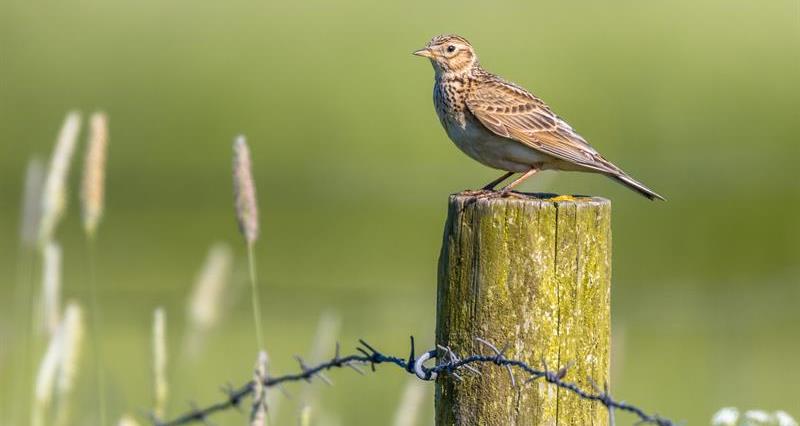The annual nationwide survey, organised by the GWCT, provides a vital snapshot of the health of our cherished farmland birds.
This year marks the 12th anniversary of the GWCT Big Farmland Bird Count – the first nationwide citizen science project to involve farmers in monitoring the state of farmland songbirds.
The count aims to raise awareness of the important role they play in the conservation of farmland birds, and to measure the impact of the conservation work that many farmers and wildlife managers carry out.
This year, the GWCT has published new and exciting easy-to-use guides and count sheets to help get younger spotters involved and make this year's count a family adventure.
How to get involved
Visit GWCT Big Farmland Bird Count and follow these three simple steps:
- Download your count sheet.
- Count your birds on one day between 7-23 February and spend around 30 minutes recording the species and number of birds you can see on one particular area of your farm.
- Once you've completed your count, simply submit your results online at: bfbc.org.uk.
You can also download a free farmland bird ID guide from the GWCT – the essential companion for participants in the Big Farmland Bird Count.
“The Big Farmland Bird Count always provides a fantastic snapshot of the huge amount of work being carried out on our farms to encourage wildlife."
Aled Jones, NFU Cymru President
Take part and make a difference
NFU Cymru President Aled Jones described farmers and growers as “passionate about maintaining and improving the great Welsh countryside”.
He added: “The Big Farmland Bird Count always provides a fantastic snapshot of the huge amount of work being carried out on our farms to encourage wildlife.
“I’m delighted that the GWCT’s 2025 count will launch in February and that there will be a push for the next generation to be more involved.
“I would encourage members to get help from your children, grandchildren or younger friends and family as it’s a great way to connect with farming in a way that’s engaging, memorable and fun.”
Tips to help make a change
The GWCT suggests a few changes can make a big difference:
- Adopt effective conservation measures, such as providing supplementary winter feeding or growing crops specifically to provide seed for birds.
- Provide extra winter seed food. Supplementary feeding is particularly beneficial for birds of conservation concern like grey partridge, yellowhammer and corn bunting.
- Use ‘conservation headlands’ – wide field margins where little or no pesticides are used – to encourage insect populations and safe nesting habitat.
2024 results
During 2024, nearly 395,000 birds were spotted across the UK as part of 1,721 surveys.
The results found that:
- Blackbirds, woodpigeons and robins were present on 79% of farms.
- 41% of farms provide supplementary feed to help birds through winter.
- 27 species from the Red List for Birds of Conservation Concern were spotted, totalling 139,102 individual birds.
- Starlings, Linnets, Fieldfares and Lapwings were the most abundant Red Listed species recorded.
- The rarest sightings were of snow bunting, rock pipit, merlin, greenshank, golden eagle and Bittern.
Farmland birds
A few of the common - and less common - species you might spot




